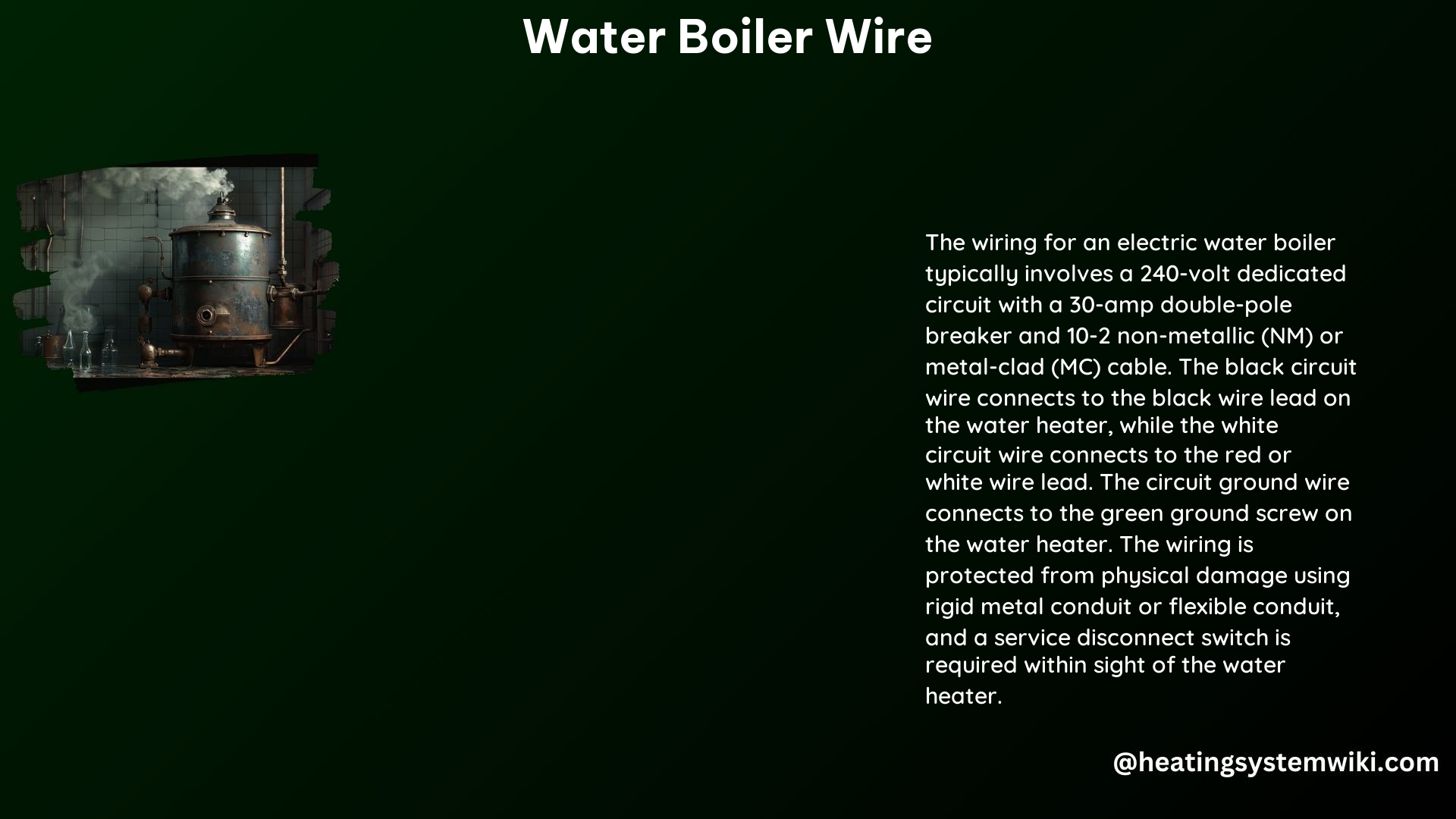The water boiler is a crucial appliance in many households, providing a reliable source of hot water for various domestic needs. Proper wiring of the water boiler is essential to ensure safe and efficient operation, as well as compliance with local electrical codes. This comprehensive guide delves into the technical specifications, installation procedures, and safety considerations for water boiler wire, equipping you with the knowledge to tackle this task confidently.
Understanding the Technical Specifications of Water Boiler Wire
The water boiler wire must be capable of handling the electrical load required by the appliance. The key technical specifications to consider include:
Voltage
The standard voltage for residential water boilers in North America is 240 volts. This higher voltage is necessary to power the heating elements, which typically range from 4,500 to 5,500 watts.
Current
Each heating element in a water boiler draws a specific amount of current, which is calculated by dividing the element’s wattage by the voltage. For a 4,500-watt element operating at 240 volts, the current draw is 4,500 / 240 = 18.75 amps.
Conductor Size
The National Electrical Code (NEC) requires the use of 10-gauge wire for a water boiler with two 4,500-watt heating elements. This is because the total current draw is calculated as 125% of the maximum current rating of the heating elements, which results in a total current of 23.44 amps (18.75 amps x 1.25).
Circuit Breaker
To protect the water boiler wiring and ensure safe operation, a 30-amp double-pole circuit breaker is required. This breaker must be compatible with the 10-gauge wire and capable of handling the total current draw.
Cable Type
The water boiler wire can be either 10-2 non-metallic (NM) cable or 10-2 metal-clad (MC) cable. Both types of cable are suitable for the application and provide the necessary protection for the wires.
Wiring a Water Boiler: Step-by-Step Guide

Properly wiring a water boiler involves several crucial steps to ensure safety and compliance with electrical codes. Here’s a step-by-step guide:
-
Turn off the Power: Before starting the wiring process, locate the circuit breaker that controls the water boiler and turn it off. Verify that the power is disconnected using a voltage tester.
-
Locate the Electrical Connections: The water boiler’s electrical connections are typically made at a built-in junction box on the top of the tank. Remove the cover plate to access the wire connections.
-
Connect the Wires: Connect the black circuit wire to the black wire lead on the water boiler, and the white circuit wire to the red or white wire lead on the water boiler. Wrap the white circuit wire with black or red electrical tape near the connection to indicate that it is a “hot” wire.
-
Protect the Wires: Ensure that the wires are protected from physical damage in accordance with NEC section 334.15. This can be done by using rigid metal conduit or flexible conduit to enclose the wires.
-
Install a Service Disconnect: A service disconnect switch or a lockout at the circuit breaker is required to ensure that the power can be safely turned off while working on the water boiler.
-
Secure the Connections: Tighten all wire connections and ensure that the junction box cover plate is properly reinstalled.
-
Test the Installation: Turn the circuit breaker back on and check the water boiler’s operation to ensure that it is functioning correctly.
Safety Considerations
Proper wiring of a water boiler is crucial for safety. Always follow local electrical codes and guidelines to ensure that the installation meets the necessary requirements. Additionally, consider the following safety measures:
- Grounding: Ensure that the water boiler is properly grounded to prevent the risk of electric shock.
- Strain Relief: Use appropriate strain relief fittings to prevent the wires from being pulled or stressed at the connections.
- Insulation Integrity: Regularly inspect the wiring for any signs of damage or deterioration to the insulation.
- Disconnect Accessibility: Ensure that the service disconnect switch or circuit breaker is easily accessible for quick power shutoff in case of an emergency.
By adhering to these technical specifications and following the step-by-step wiring guide, you can ensure the safe and efficient operation of your water boiler. Remember to always prioritize safety and consult a licensed electrician if you have any doubts or concerns during the installation process.
References
- PlumbersStock – How to Wire a Hot Water Heater
- The Home Depot – Wiring – Water Heaters – Plumbing
- The Spruce – Understanding Electric Water Heater Wiring
- Structure Tech – Inspecting the wiring to an electric water heater
- YouTube – Water Boiler Wiring Diagram
